Tea Expires? The Shelf Life of Black Tea, Green Tea, White Tea, etc
by Janelle Wazorick
July 12, 2022

The Lifespan of Tea
Expiration dates, Sell By dates, Best If Used By dates. These are the little annotations that everyone who has ever walked into a grocery store and bought perishables checks to make sure they're getting the freshest, longest-lasting food.But did you know the same applies to tea as well?
Unlike a lot of other consumables, tea doesn't go bad in the traditional sense: you won't get sick if you drink that tea your grandma gave you five birthdays ago.
However, tea does have a lifespan and will lose its flavor and becomes stale over time. Different teas have different lifespans: some can last in the cabinet for years while others will start to lose its flavor after a couple of months. Wondering if you should start sipping that oolong you bought almost a year ago? Here is how long you can expect to enjoy different teas.
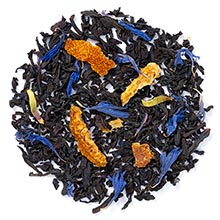
Black Teas: 2-3 Years
Historically, one of the reasons black tea was a staple of trade in Asia was its longevity; it was an excellent export and could be manufactured, packaged, and stored for long journeys across mountains and borders before it finally landed in a teapot. In modern times, that means that Irish Breakfast you bought yesterday can delight your mug for quite a while.Black tea has been fully oxidized during manufacturing, meaning that it's not as susceptible to air exposure as lighter teas like green tea (though, proper storage is still recommended to keep black tea fresh). So, go ahead and buy that Earl Grey or that Lapsang Souchong even with a growing tea collection, black teas will still taste flavorful and robust even a couple of years down the road.
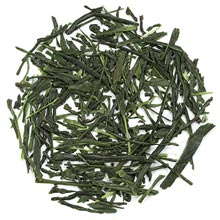
Green Teas: 6 to 18 months
Freshness is key to a good cup of green tea; in fact, green tea goes through so little processing, it's the closest you can get to directly plucking a leaf off the bush and brewing it.Although green tea is heated during the manufacturing process to halt the oxidation process, it's still susceptible to growing stale by exposure to air which can prematurely age it if not stored properly.
Delicate green teas, such as the flattened Sencha or Gyokuro, can age very quickly and should be used within six months of opening. However, some green teas like Gunpowder can last as long as three years due to the fact that it's rolled and has less surface area.
As a general rule, if a tea is flattened and has a lot of surface area, it should be used quickly, but if it is rolled and has less exposed surface area, it can last much longer.
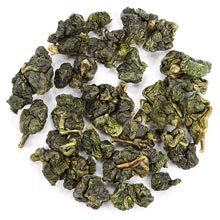
Oolong Teas: 6 months to 2 years
Oolongs are often described as somewhere between green and black tea: sometimes they can be closer to a green tea and keep its freshness for around six months, while other times they're closer to a black tea and can be flavorful a couple of years down the line.Generally, oolongs that are less oxidized (such as Ali Shan) should be used quickly to enjoy its full flavor, while heavily oxidized oolongs (such as Bai Hao) can be kept around for quite a while.
The key to maintaining freshness in an oolong is proper storage: since loose oolong has a shorter shelf life and opening a container can expose it to humidity and air that can prematurely age it, it's recommended to store oolongs in multiple, small containers for less air exposure.
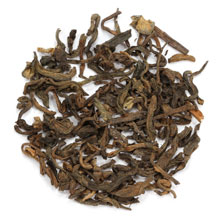
Pu-erh Teas: Up to... 50 Years?!?!
Okay, that might be a little bit of an exaggeration. While some Pu-erhs can be tucked away in your pantry for half a century, it really depends on the type of Pu-erh and how it's stored.Pu-erh is an aged tea, though depending on the type of Pu-erh, it can be naturally aged (called raw or sheng) or artificially aged (called cooked, ripe, or shou). Many pu-erh connoisseurs like to buy young raw pu-ehrs (sometimes in pressed-cake form for the big pu-erh drinkers) and leave it in their pantry for decades, aging it like a fine wine before enjoying it. Because cooked pu-erh production is a sped up aging process, it can be enjoyed right away.
While pu-erhs can get better with age, they do reach a point where they stop getting better. With proper storage and depending on the type, raw pu-erhs can be enjoyed over twenty years later, but cooked pu-erhs should be enjoyed much sooner. Either way, if you're looking for a long-lasting tea, look no further than pu-erh.
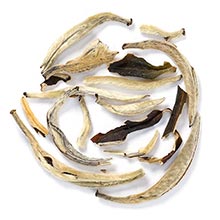
White Teas: 1 Year to 18 Months
White teas are delicate: delicate flavors, delicate aromas, and also delicate leaves. Like green teas, white tea undergoes very little processing with only a slight amount of oxidation that occurs naturally when withering (not to mention that it's made with the young, delicate buds of the tea bush of early Spring).That Silver Needle you bought a month ago should be enjoyed fresh within the first six months of opening, but it is possible to stretch any white tea's lifespan to one year or longer (but after two years, it will definitely lose its freshness).
Like with its green counterpart, special care is needed when storing a white tea: avoid sunlight and overexposure to air to preserve white tea's flavor for many cups to come.
Help! I Have Old Tea! What Do I Do?
If you find that your tea collection is starting to show its age, no sweat. While the tea might have started losing its flavor, you can still brew the tea until you decide too much of its flavor is lost (you may start thinking that you're drinking hot water and not hot tea). If you're like me and you hate waste, there are plenty of ways to repurpose old tea leaves.You can incorporate old tea leaves into cleaning around the house, deodorizing everyday items like shoes, give yourself a spa day by brewing yourself a tea bath (fun fact: some spas in Japan allow you to unwind in a nice, warm tea bath), and even getting crafty with tea like adding it into soapmaking or painting with it. Find an article on TeaMuse that details this here. Just because the leaves are old doesn't mean you have to throw it out: simply repurpose them!